As you might suspect, Poland has a whole series of customs and traditions surrounding Easter, which range from pious to playful, to downright pagan. As a deeply Catholic country, Polish Easter traditions (PL:Wielkanoc) are taken very seriously. In fact, Easter in Poland is arguably the most important holiday of the year for the nation's most devout, but also an important time for more secular Poles to spend with family, regardless of their religious views.
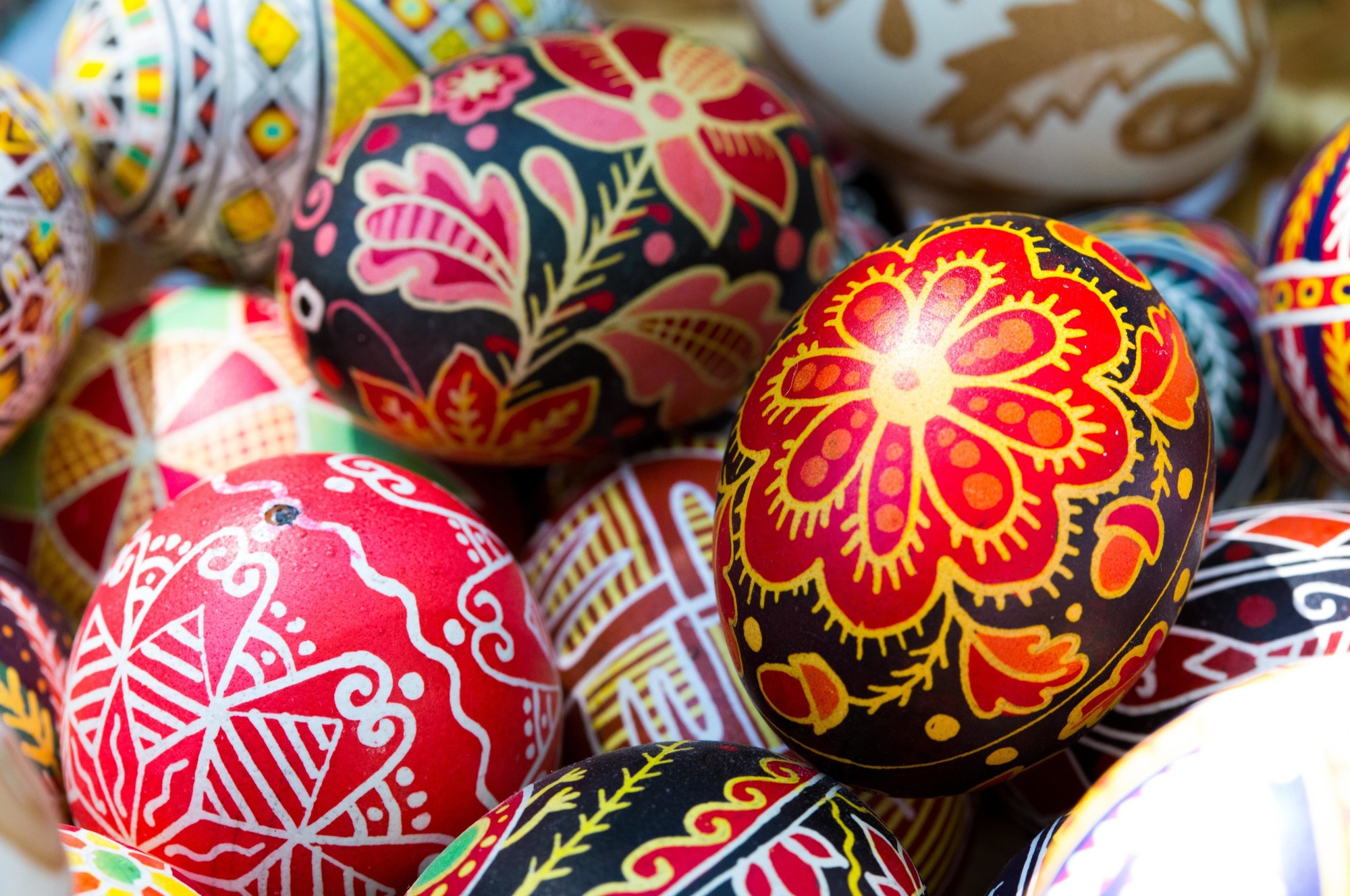
WHEN IS EASTER CELEBRATED IN POLAND?
In 2023, Easter Sunday in Poland will be celebrated on the 9th of April. Thus, Easter Monday in Poland will be celebrated on the 10th of April! As such, you can expect bars and restaurants to be largely empty of locals or completely closed from Good Friday to Easter Sunday (April 7-9, 2023); shops are typically closed on Easter Sunday and Monday (April 9-10, 2023), which are official holidays. However, Easter in Poland begins a whole week earlier!
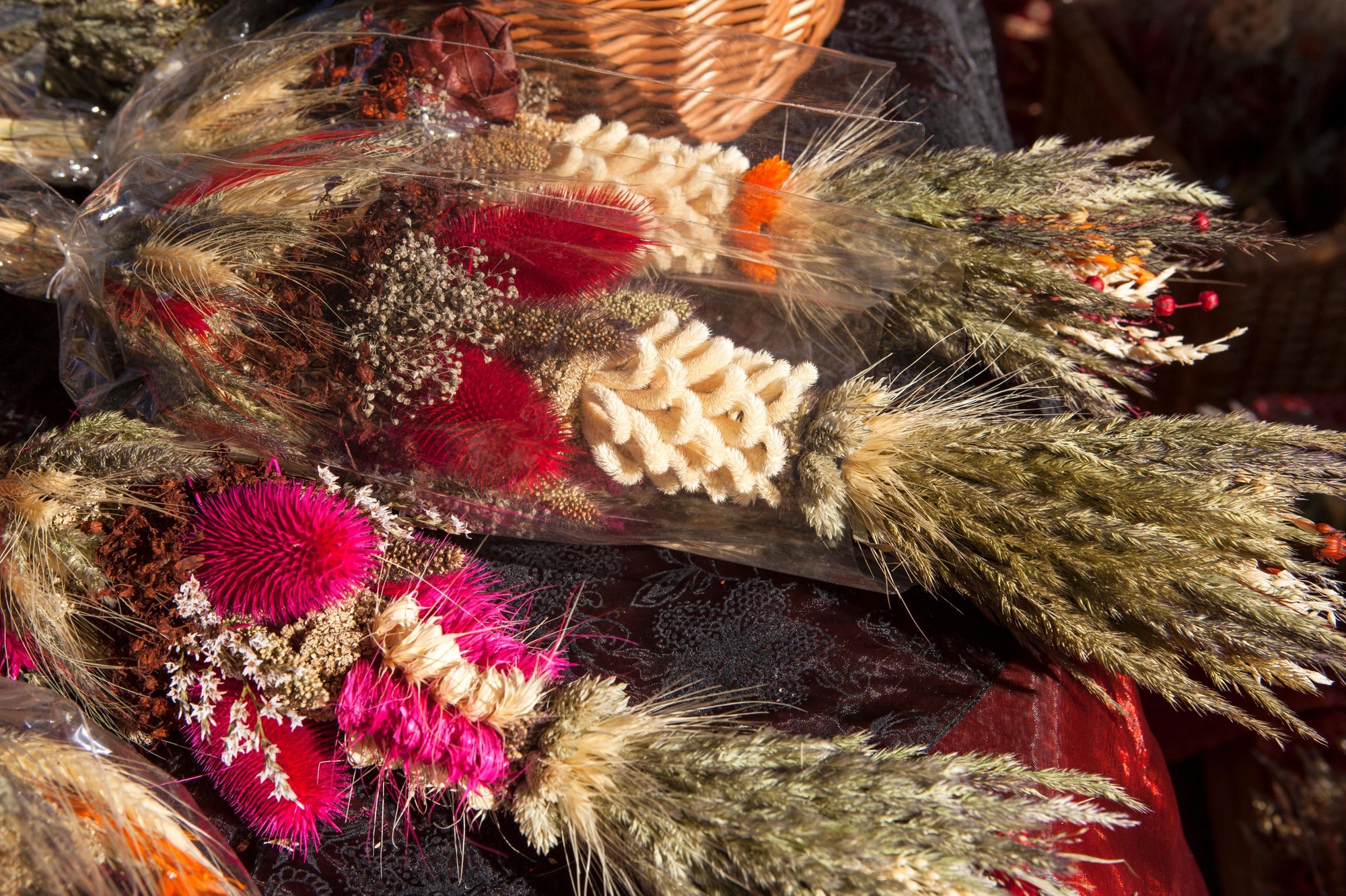
HOW IS EASTER CELEBRATED IN POLAND?
While different cities around the country have their own schedules to follow (read about Easter celebrations in Kraków and Gdańsk) The beginning of the Easter holiday season is around the time you'll start seeing traditional handmade ‘palms’ for sale in the market squares of all major cities in the days before Palm Sunday (April 2, 2022) - the Catholic holiday so named for the palm branches laid on the ground before Jesus on his entrance into Jerusalem. As the Polish climate isn’t particularly conducive to palm trees, Polish Catholics invented their own ‘palms’ - essentially elaborately handwoven wands made from a variety of dried flowers and plants. Rather than trample them, however, Poles take their palms to church on Palm Sunday, in order to have them blessed before they decorate the home for the season.

As any true Polish mother will attest, you can’t bring an Easter palm home to a dirty domicile, and the week leading up to Easter Sunday is traditionally a time of spring cleaning, as well as attending mass (again on Thursday to remember the Last Supper, and on Good Friday to attend stations of th cross). Easter eggs - known as pisanki - are also hard-boiled, dyed (see below) and hand-decorated by families in the lead-up to Easter. On Easter Saturday, these eggs are added - along with other small portions of food that will be eaten the following morning: sausage, bread, salt, beets, horseradish, and a symbolic ram made of dough - to traditional Easter baskets and taken to church to be blessed.
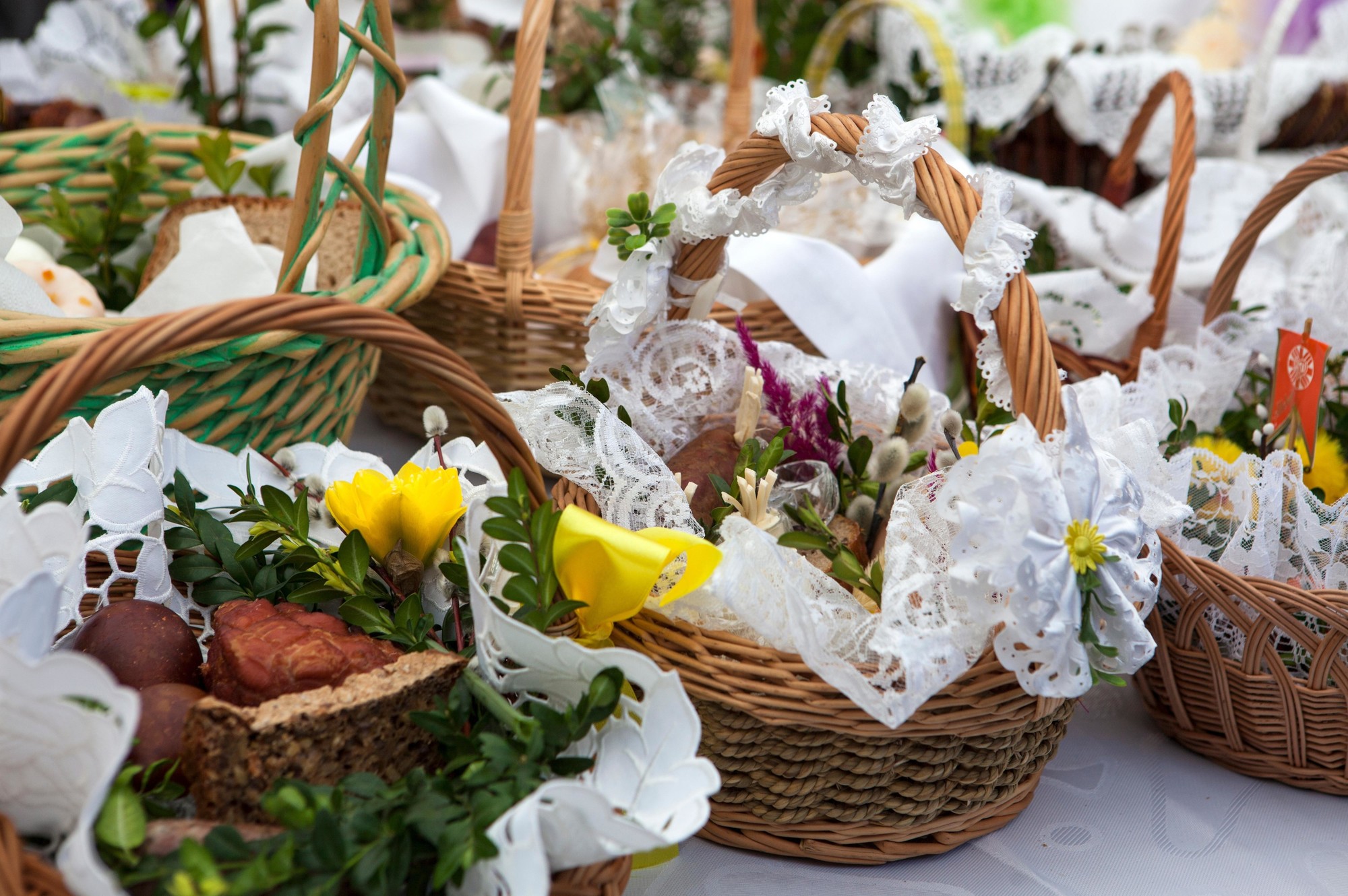
In the evening keep an eye and an ear out for orderly crowds walking through the streets crying “Hallelujah! Hallelujah!” Known as 'Rezurekcja' (Resurrection), this processional mass often features torches, tall crosses and loud speakers, and held either Saturday night or Easter morning depending on parish tradition.
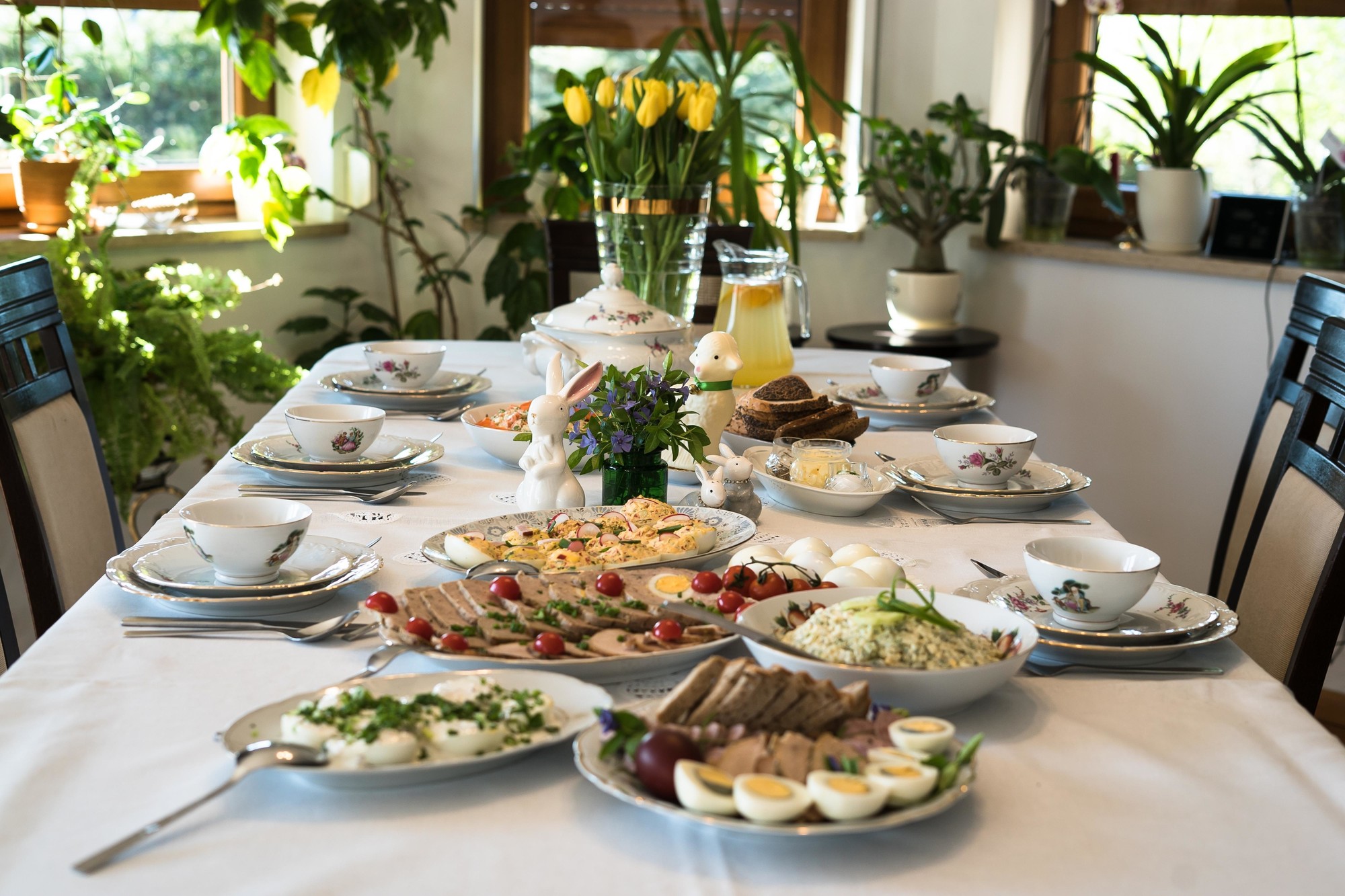
On the morning of Easter Sunday - the most important day of the entire 'Wielki Tydzień' (Great Week) - families gather together for the Easter feast. With the dough ram on the table to symbolise Christ’s resurrection, before the meal begins each person takes a small wedge of the blessed egg and exchanges wishes with the other members of the family, before capping it off with a big ‘Hallelujah’ and digging in. This Sunday morning is characterised by a breakfast of traditional Polish easter food, usually a smorgasbord of cold dishes, including cold cuts of sausage, ham and pate, potato salad and beets, and pickled herring. Easter Food in Poland has much less of a focus on hot dishes, however, 'żurek' (Polish rye soup) and white sausages are often served as well! There are, of course, plenty of desserts, including 'mazurek' (a decoratively iced dessert pie), 'makowiec' (poppy seed cake) and cheesecake. For more, read our article: Polish Food - 13 Dishes You Must Try!
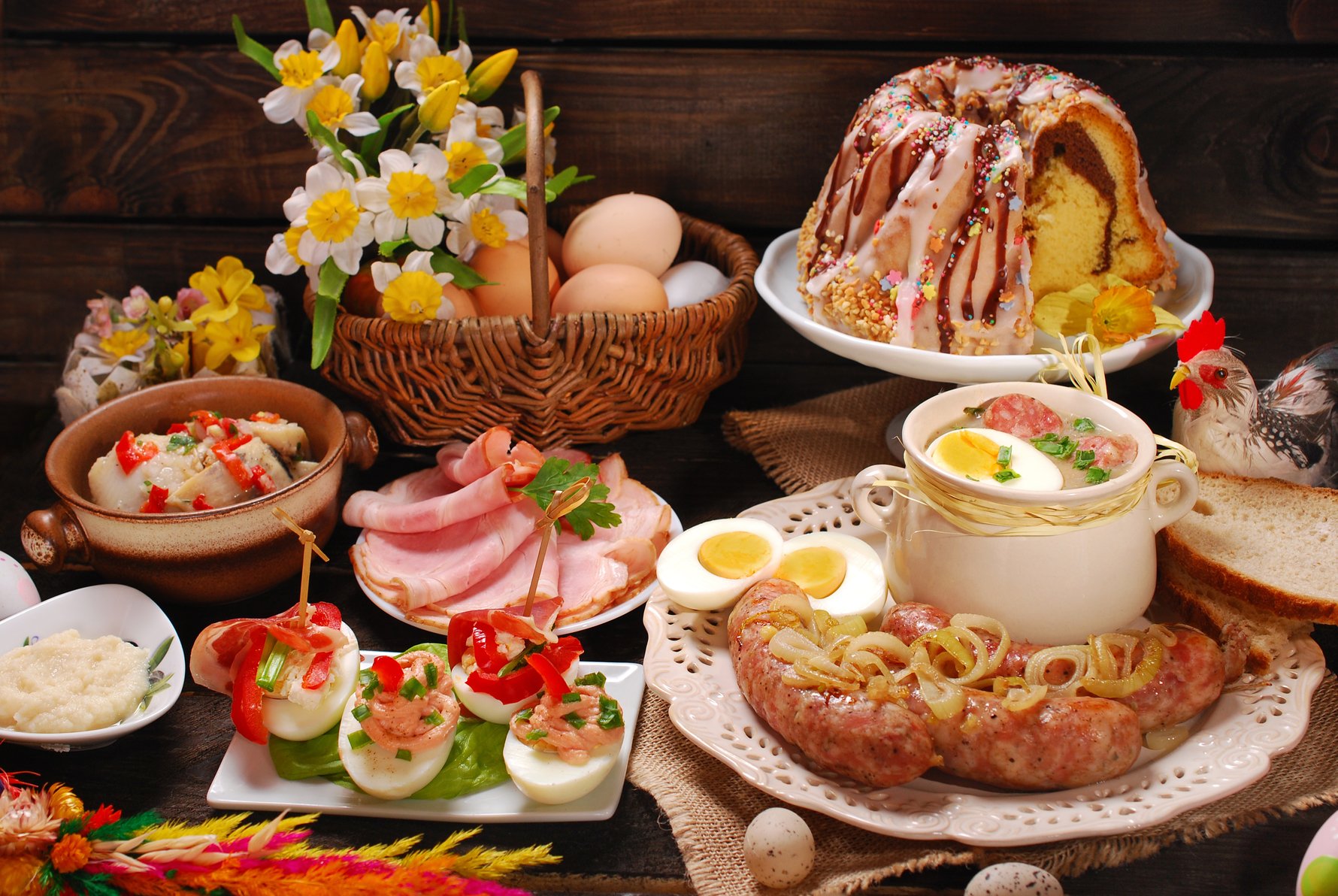
Although decidedly bunny-free, things do finally take on a more lighthearted air the next day. Easter Monday is also known as Dyngus Day (Śmigus Dyngus in Polish), or 'Wet Monday', which is dominated by public water fights and everyone being given carte blanche to drench anyone they see with water. As a foreigner, you are not exempt from this centuries-old Easter Monday tradition in Poland, so move fast if you see someone armed with a water pistol or bucket and a grin. Although it’s never pleasant to have a jug of water thrown over your head, this is an improvement over the past when young people were beaten with sticks from Palm Sunday trees; apparently, either one will bring you luck. Easter Monday is also an official day off, though many families will journey into the centre for market festivities. Finally, most Poles are safely back at work on Tuesday, and must wait a full 365 days before it all kicks off again. Happy Easter!
DECORATED EASTER EGGS IN POLAND
Speaking of 'decorations', we cannot forget the all-important egg! In Poland they're known as pisanki and, while it's common enough for people in western Europe and abroad to go crazy with coloured-markers and glitter, Poles still favour the old-school method of dyeing. Natural substances such as onion peels or beetroot juice are used, and later on a knife is used to scrape a pattern. Alternatively, wax can be used to make some interesting textures! Check out our video series on Traditional Polish Dyed Easter Eggs!This is traditionally a family activity, however, it's also a great excuse for primary school teachers to get out of teaching the alphabet or basic maths! As mentioned earlier, these eggs will be included in various prepared Easter baskets on Easter Saturday. There are no easter egg hunts, per say, but this more-western tradition is slowly creeping into the Polish schedule, and let's face it: who doesn't love chocolate easter eggs!


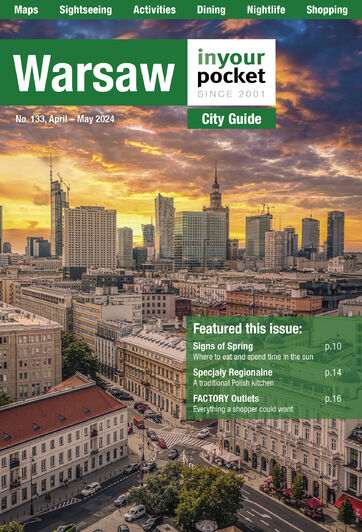


Comments